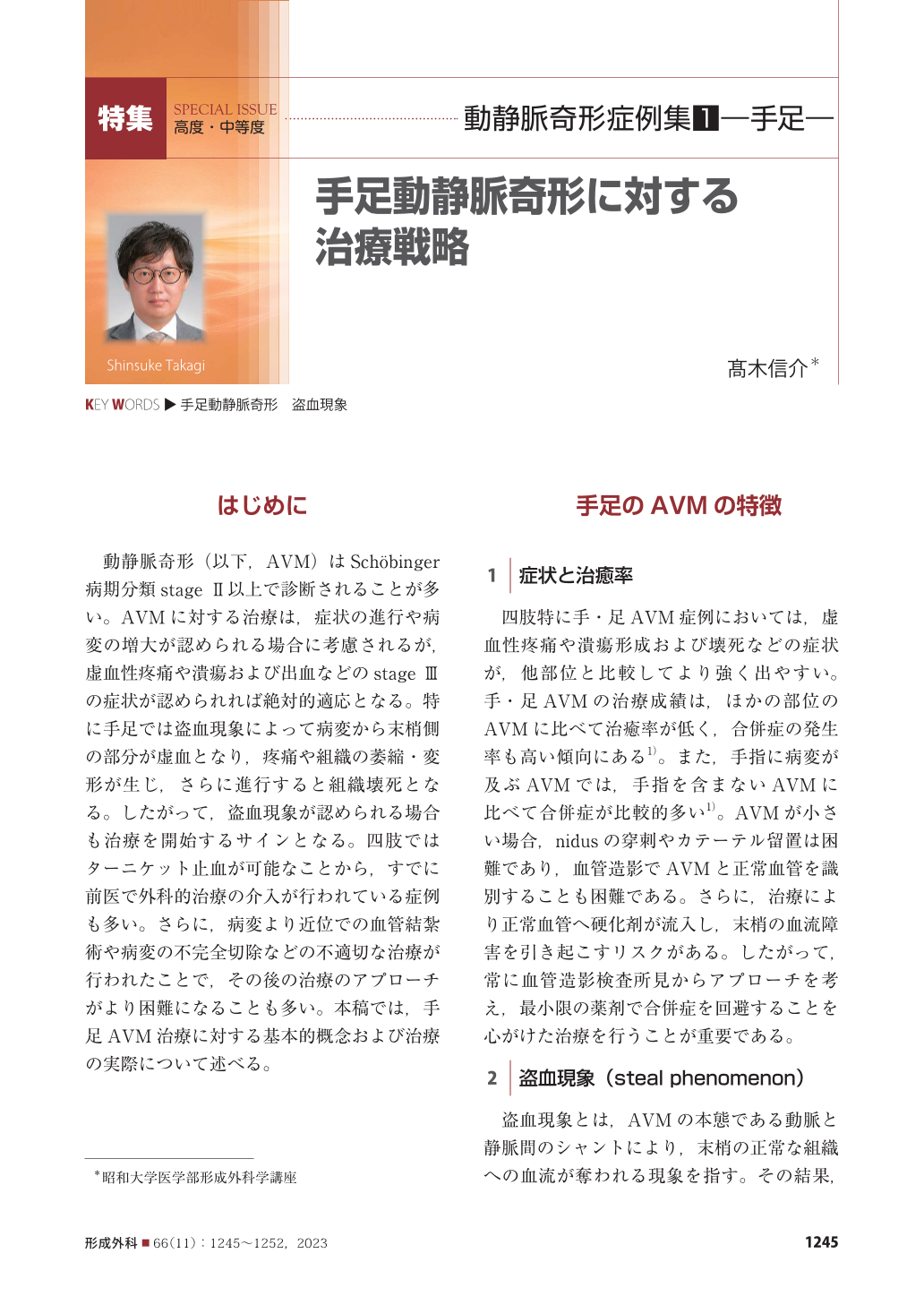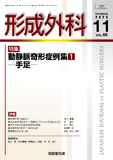Japanese
English
- 有料閲覧
- Abstract 文献概要
- 1ページ目 Look Inside
- 参考文献 Reference
はじめに
動静脈奇形(以下,AVM)はSchöbinger病期分類stage Ⅱ以上で診断されることが多い。AVMに対する治療は,症状の進行や病変の増大が認められる場合に考慮されるが,虚血性疼痛や潰瘍および出血などのstage Ⅲの症状が認められれば絶対的適応となる。特に手足では盗血現象によって病変から末梢側の部分が虚血となり,疼痛や組織の萎縮・変形が生じ,さらに進行すると組織壊死となる。したがって,盗血現象が認められる場合も治療を開始するサインとなる。四肢ではターニケット止血が可能なことから,すでに前医で外科的治療の介入が行われている症例も多い。さらに,病変より近位での血管結紮術や病変の不完全切除などの不適切な治療が行われたことで,その後の治療のアプローチがより困難になることも多い。本稿では,手足AVM治療に対する基本的概念および治療の実際について述べる。
Arteriovenous malformations (AVMs) of the hand and foot often cause ischemic pain due to the “steal phenomenon,” which leads to atrophy and deformity. Effective treatment depends on understanding the angiographic classification of AVMs; type II AVMs generally have good outcomes, while type III AVMs present significant challenges. The most important consideration when treating these AVMs is the risk of unintentional embolization of normal vessels and subsequent necrosis of peripheral tissues. The more peripheral the lesion, the more difficult it is to treat and the greater the risk of embolization of normal vessels and necrosis of peripheral tissues. There is an urgent need for an adequate treatment strategy.

Copyright© 2023 KOKUSEIDO CO., LTD. All Rights Reserved.


